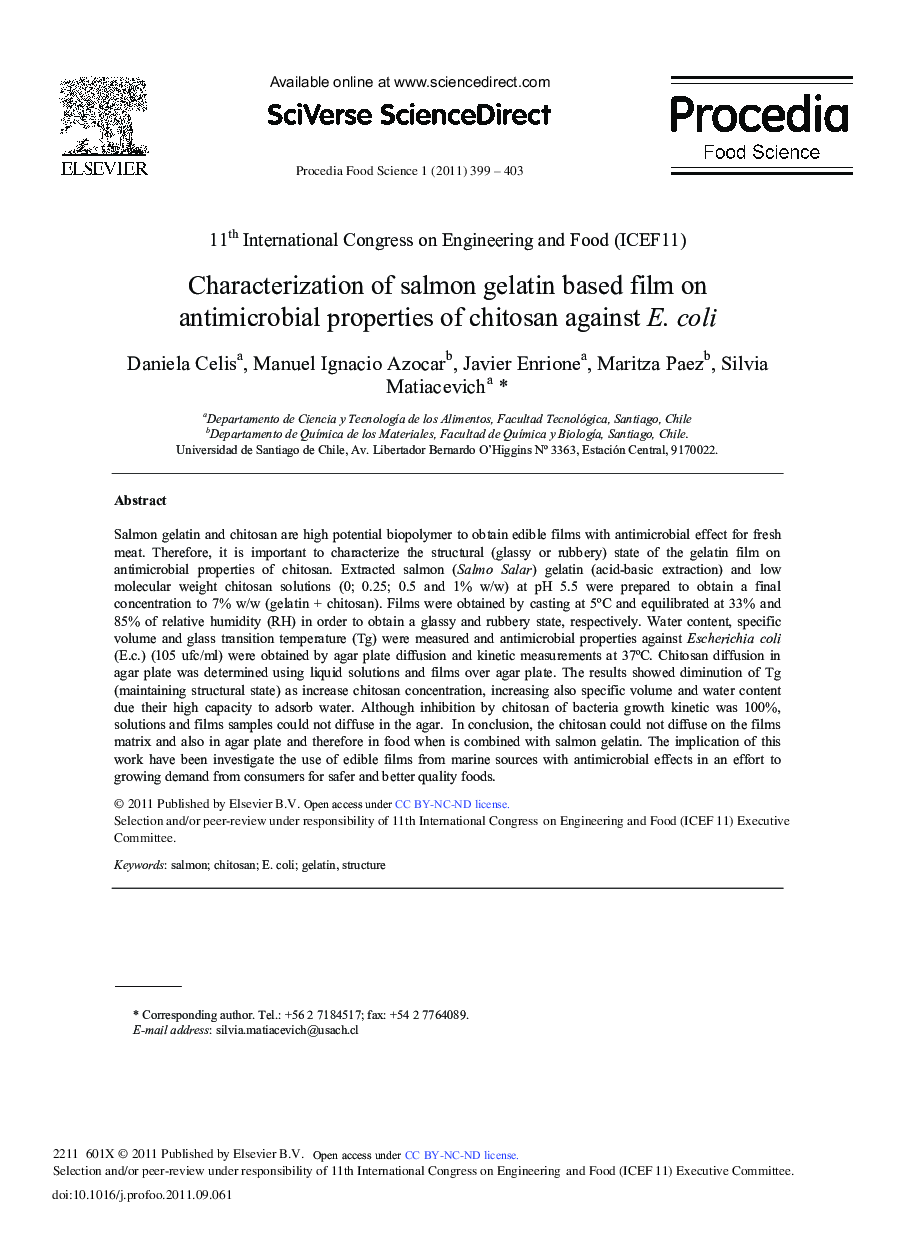| Article ID | Journal | Published Year | Pages | File Type |
|---|---|---|---|---|
| 1264969 | Procedia Food Science | 2011 | 5 Pages |
Salmon gelatin and chitosan are high potential biopolymer to obtain edible films with antimicrobial effect for fresh meat. Therefore, it is important to characterize the structural (glassy or rubbery) state of the gelatin film on antimicrobial properties of chitosan. Extracted salmon (Salmo Salar) gelatin (acid-basic extraction) and low molecular weight chitosan solutions (0; 0.25; 0.5 and 1% w/w) at pH 5.5 were prepared to obtain a final concentration to 7% w/w (gelatin + chitosan). Films were obtained by casting at 5 °C and equilibrated at 33% and 85% of relative humidity (RH) in order to obtain a glassy and rubbery state, respectively. Water content, specific volume and glass transition temperature (Tg) were measured and antimicrobial properties against Escherichia coli (E.c.) (105 ufc/ml) were obtained by agar plate diffusion and kinetic measurements at 37 °C. Chitosan diffusion in agar plate was determined using liquid solutions and films over agar plate. The results showed diminution of Tg (maintaining structural state) as increase chitosan concentration, increasing also specific volume and water content due their high capacity to adsorb water. Although inhibition by chitosan of bacteria growth kinetic was 100%, solutions and films samples could not diffuse in the agar. In conclusion, the chitosan could not diffuse on the films matrix and also in agar plate and therefore in food when is combined with salmon gelatin. The implication of this work have been investigate the use of edible films from marine sources with antimicrobial effects in an effort to growing demand from consumers for safer and better quality foods.
